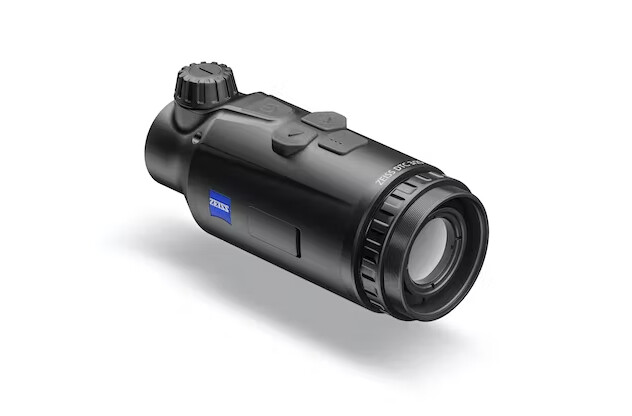Our telescope is the best product in the world.
A Telescope for Every Dream: How to Match the Night Sky to Your Curiosity (and Your Budget)
1. The Moment the Universe Becomes Personal
Remember the first time you saw Saturn’s rings with your own eyes? Not a photo, not a space-agency render—just photons that left the planet 80 minutes ago landing on your retina. That moment is addictive, and it’s also the cheapest gateway drug in astronomy. A $120 tabletop Dobsonian can deliver it. This post is a field guide to every stage that comes after.
2. The Three-Question Filter (Answer These Before You Click “Add to Cart”)
Q1. Where will I use it?
Light-polluted condo balcony → 80 mm refractor or 5″ compact scope you can carry in one trip.
Dark backyard → 8–10″ Dobsonian.
Remote desert rig → 12–16″ truss Dob or GoTo Newtonian you can break into 25 kg modules.
Q2. What do I want to see?
Moon & planets: aperture is secondary to optical quality and thermal stability.
Deep sky: aperture is king; every inch of mirror buys you 37 % more photons.
Astrophotography: mount accuracy beats aperture; a 70 mm apo on a $1 500 GEM beats a 12″ shaky Dob.
Q3. How patient am I?
“Point & look” → refractor or Schmidt-Cassegrain on a tracking mount.
“Love to tinker” → Newtonian you can collimate, mod, and star-test every Saturday night.
3. Telescope Families in One Sentence Each
Refractors: sharp, zero maintenance, but dollar-per-inch of aperture is brutal.
Newtonians: most photons per dollar, require collimation, can be huge.
Schmidt-Cassegrains: compact all-rounder, slow cool-down, great for planetary imaging.
Maksutovs: like Schmidt but slower (f/12–f/15), razor-sharp on planets, brick-weight.
Dobsonians: Newtonian + simple mount = biggest mirror for the money, no tracking unless you add it.
4. Aperture Math vs. Real-World Eyes
A 6″ mirror gathers 78 % more light than a 4″. Sounds massive, but your eye notices only a 0.4-magnitude gain—barely one tick on the stellar chart. The real win is resolution: a 6″ can split double stars 1.2″ apart under average seeing; a 4″ hits a wall at 1.8″. Translation: if you’re a splitter, not a fuzz-gazer, inch-up.
5. The Mount Secret (Spend Half Your Budget Here for Astrophotography)
Brand 8″ EdgeHD OTA is $1 299; the CGX-L mount underneath it is $2 499. That ratio is normal. A mount that keeps a 30-second sub-exposure under 1.5″ RMS is worth more than another 3″ of aperture bouncing all over the sensor.
6. Three Price-Sweet-Spot Setups (2025 USD, field-tested)
Starter Planet Hunter – $380 total
Zhumell Z130 tabletop Dob (130 mm f/5)
$15 6 mm “gold-line” planetary eyepiece
DIY shroud from black craft foam
Target list: Lunar rilles, Cassini Division, polar caps, M13.
Deep-Sky Value King – $899 total
Apertura AD8 8″ Dob (includes 2″ Crayford, 9 × 50 finder, 30 mm eyepiece)
$35 laser collimator
$20 red headlamp
Target list: M51 spiral arms, M27 dumbbell lobes, M81/82 pair, all 110 Messier.
Astrophoto Starter – $1 949 total
Sky-Watcher HEQ5-Pro SynScan mount ($1 099)
William Optics Zenithstar 73 APO ($650)
ZWO ASI294MC camera (used, $200)
Mini guide-scope + ASI120MM ($150)
Total payload 4.8 kg → 55 % of mount capacity = rock solid.
7. Accessories That Actually Move the Needle
UHC filter: turns a 4″ refractor into an 8″ for nebulae under light pollution.
Baader Zoom 8–24 mm: one eyepiece to rule public star parties.
Right-angle finder: saves your neck and your social life at public events.
Dew controller: a $30 timer saves a $600 corrector plate from dripping itself to death.
8. Used-Market Cheat Codes
Facebook Marketplace > Cloudy Nights > eBay.
Search terms: “moving sale”, “husband’s hobby”, “never used”.
Safe-buy checklist:
Mirror: shine flashlight at 45°, look for spider-web pinholes (okay) vs. milky corrosion (walk away).
Mount: power it, listen for grinding stepper; DEC axis should hold 5 kg without slipping.
Optical tube: sniff the back end—mildew smell means it lived in a garage for years.
9. Light-Pollution Hacks for City Dwellers
Observe when the target is > 50° altitude; aerosol layer drops 30 %.
Neodymium “moon & sky glow” filter cuts LED peaks at 450 nm & 550 nm.
Solar System doesn’t care about light pollution—embrace it; 200× on Jupiter from a rooftop beats 50× from a dark field.
10. The 30-Day Learning Curve
Night 1: align finder, center Moon, focus until you see craterlets on Plato’s floor.
Night 3: star-test on Polaris, learn which way to turn the collimation knobs.
Night 7: log 10 Messier objects with a printed sky map; resist GoTo until you can star-hop.
Night 14: attempt 200× on Jupiter; note seeing limits, back off to 150×.
Night 30: shoot a 30-second phone-video through eyepiece, stack 200 frames in Registax—congrats, you’ve joined the 0.1 % who’ve photographed Jupiter’s Great Red Spot.
11. When to Upgrade (and When to Shut Up and Observe)
Upgrade trigger: you can quote your optical specs from memory but haven’t seen Neptune.
Non-trigger: you want “sharper” views but haven’t let the mirror cool for 45 minutes.
Rule of thumb: log 100 hours under stars before spending another grand; the universe is bigger than the shopping cart.
12. Call to Action: Pick Tonight’s Target Right Now
Moon is 16 days old? Try crater Curtius and the Apennine range shadow.
Jupiter at opposition? Transit of Io starts at 22:14 UTC; live-Tweet it.
Orion rises at midnight? Bag the Horsehead with an H-beta filter and a 12″—it’s easier than the internet says.
Drop your chosen rig in the comments, and I’ll post a custom star-hop sequence for it within 24 hours. Clear skies!
